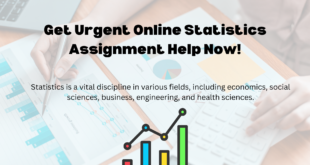Trade shows are unique opportunities for businesses to showcase products, build brand awareness, and connect directly with prospects. However, with numerous exhibitors vying for attention, it can be challenging to stand out and make a lasting impact. Successful trade show marketing requires a mix of creativity, strategy, and timing. Here are three powerful trade show marketing ideas that can help event organizers maximize engagement, drive foot traffic, and boost ROI.
1. Create a Pre-Event Marketing Campaign with Targeted Content
One of the most effective ways to build momentum and drive attendance to your booth is by starting your marketing efforts well before the trade show begins. A pre-event marketing campaign helps create awareness and anticipation among your target audience, ensuring that they’re already interested in visiting your booth by the time the event kicks off.
Steps to Launch an Effective Pre-Event Campaign:
- Audience Segmentation: Start by identifying key attendee segments, such as industry professionals, potential buyers, or current clients. Tailor your pre-event messaging to each segment to increase relevance and engagement. For example, existing customers may be more interested in exclusive previews of new products, while potential buyers might respond to invitations for one-on-one consultations.
- Email Marketing Sequence: Create a series of emails that countdown to the event, including teasers of what attendees can expect. For example:
- Initial Announcement: Send an email with general details, highlighting what makes your booth worth visiting.
- Behind-the-Scenes Content: Share a sneak peek of products, or introduce key team members who will be at the booth.
- Exclusive Invitations: Send out special invitations to schedule a demo or consultation, or offer early access to a VIP event or giveaway.
- Social Media Engagement: Use platforms like LinkedIn, Twitter, and Instagram to keep followers informed. Share updates on booth activities, partner announcements, or live demos you’ll be showcasing. Engage your followers with interactive content, such as polls or countdowns, to keep excitement high.
- Landing Page with Registration Form: Create a dedicated landing page for your trade show appearance, highlighting what attendees can expect and why they should visit your booth. Include a registration form for those interested in scheduling a demo, getting a product sample, or joining your booth’s VIP list. This can help you capture leads even before the event begins.
Why This Works:
A pre-event campaign builds anticipation and ensures that attendees have your booth on their radar before they arrive. Tailored messaging makes your communications more relevant, increasing the chances of driving foot traffic and pre-booking meetings. By nurturing relationships in advance, you can generate more meaningful interactions on the trade show floor, maximizing your engagement and ROI.
2. Offer Interactive Experiences to Engage Attendees
Engagement is key at trade shows, where attention spans are short, and exhibitors are abundant. Offering interactive experiences that make your booth memorable can help you stand out from the crowd and keep attendees engaged long enough to build meaningful connections.
Types of Interactive Experiences to Consider:
- Product Demonstrations and Hands-On Testing: One of the best ways to showcase your product is to let attendees experience it firsthand. Set up interactive stations where attendees can try out products or participate in live demos. For complex products, consider guided tours that walk attendees through features and benefits.
- Gamification: Games, challenges, and competitions are fun ways to capture attention and encourage engagement. You could create a branded trivia game related to your industry, a scavenger hunt with prizes, or an on-the-spot product quiz that rewards correct answers with small giveaways. Gamification not only entertains but also encourages attendees to remember your brand and spend more time at your booth.
- Virtual and Augmented Reality (VR/AR): VR and AR experiences offer a high-tech, immersive way to showcase products and services. For example, if you’re a construction company, use VR to let attendees explore a virtual building. If you’re in retail, let visitors use AR to visualize products in real-life settings. These experiences are unique, memorable, and often become a talking point, driving additional foot traffic as attendees share their experience with others.
- Live Polling and Feedback Stations: Create opportunities for attendees to share their opinions or insights through live polls, tablets, or feedback stations. Not only does this engage them, but it also gives you valuable insights that can guide future product development or marketing strategies.
Why This Works:
Interactive experiences capture attention and help attendees remember your brand. When people are actively involved, they’re more likely to feel a connection to your brand, improving their perception of your company. In a busy trade show environment, these memorable interactions can create a positive, lasting impression that differentiates your booth from others.
3. Utilize Post-Event Follow-Up Campaigns to Convert Leads
The trade show may end, but your marketing efforts shouldn’t. A well-executed follow-up campaign is crucial for nurturing leads and converting them into customers after the event. This is where your pre-event work pays off, as targeted follow-up can drive additional ROI by keeping your brand top of mind and turning connections into business opportunities.
How to Build an Effective Post-Event Follow-Up Campaign:
- Segment Your Leads: Separate your leads based on their level of engagement at the event, interest in your product, or other relevant criteria. For instance, those who requested demos or attended presentations may be closer to purchase readiness than those who simply stopped by your booth.
- Personalized Follow-Up Emails: Create personalized follow-up emails for each lead segment. For high-interest leads, follow up with a thank-you email, along with a personalized note recapping your conversation and providing any promised resources or materials. For colder leads, consider a softer follow-up that encourages them to stay in touch or invites them to upcoming events.
- Retargeting Ads: Use retargeting ads on platforms like LinkedIn and Google to keep your brand visible to those who visited your booth or interacted with your landing page. This can help remind attendees of your brand and encourage further engagement after the event.
- Provide Valuable Resources: Instead of immediately pushing for sales, offer valuable content that aligns with attendees’ interests. This could be a downloadable whitepaper, a webinar, or a case study that addresses challenges relevant to your target audience. This positions your brand as a helpful resource and keeps potential customers engaged without overwhelming them.
- Personalized Follow-Up Calls: For high-priority leads, assign team members to reach out personally within a week of the event. Express gratitude for their time at your booth and ask if they have any further questions. This follow-up approach shows that you care about their specific needs and are genuinely interested in providing solutions, which can help move leads further down the sales funnel.
Why This Works:
Post-event follow-up is essential for converting trade show interactions into real business opportunities. Segmenting and personalizing your follow-ups ensures that your message resonates with leads, increasing the likelihood of conversion. By focusing on relationship-building rather than hard selling, you create a foundation for lasting customer relationships and maximize the ROI of your trade show efforts.
Conclusion
Effective trade show marketing involves thoughtful planning and creative approaches that engage attendees before, during, and after the event. By implementing these three ideas—building a pre-event marketing campaign, offering interactive booth experiences, and executing a targeted post-event follow-up—you can capture attention, build lasting relationships, and ultimately boost ROI.
These strategies not only help drive foot traffic and engagement but also create a memorable impression that can lead to long-term business success. With the right marketing tactics, your trade show presence can become a powerful tool for brand growth and lead generation.
 Our Gateway to Insightful Blogging Exploring Ideas, Sharing Knowledge, Inspiring Minds
Our Gateway to Insightful Blogging Exploring Ideas, Sharing Knowledge, Inspiring Minds



